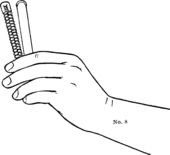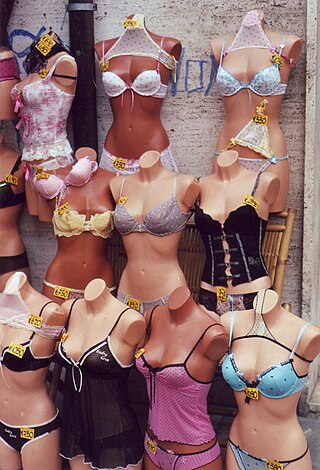
Lingerie is a category of primarily women's clothing including undergarments, sleepwear, and lightweight robes. The choice of the word is often motivated by an intention to imply that the garments are alluring, fashionable, or both. In a 2015 US survey, 75% of women and 26% of men reported having worn "sexy lingerie" in their lifetime.
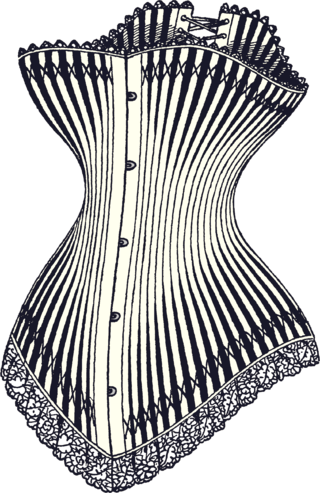
A corset is a support garment commonly worn to hold and train the torso into a desired shape, traditionally a smaller waist or larger bottom, for aesthetic or medical purposes, or support the breasts. Both men and women are known to wear corsets, though this item was for many years an integral part of women's wardrobes.

The fuselage is an aircraft's main body section. It holds crew, passengers, or cargo. In single-engine aircraft, it will usually contain an engine as well, although in some amphibious aircraft the single engine is mounted on a pylon attached to the fuselage, which in turn is used as a floating hull. The fuselage also serves to position the control and stabilization surfaces in specific relationships to lifting surfaces, which is required for aircraft stability and maneuverability.

Baleen is a filter-feeding system inside the mouths of baleen whales. To use baleen, the whale first opens its mouth underwater to take in water. The whale then pushes the water out, and animals such as krill are filtered by the baleen and remain as a food source for the whale. Baleen is similar to bristles and consists of keratin, the same substance found in human fingernails, skin and hair. Baleen is a skin derivative. Some whales, such as the bowhead whale, have longer baleen than others. Other whales, such as the gray whale, only use one side of their baleen. These baleen bristles are arranged in plates across the upper jaw of whales.

Tightlacing is the practice of wearing a tightly-laced corset. It is done to achieve cosmetic modifications to the figure and posture or to experience the sensation of bodily restriction.
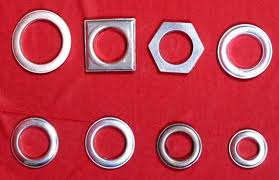
A grommet is a ring or edge strip inserted into a hole through thin material, typically a sheet of textile fabric, sheet metal or composite of carbon fiber, wood or honeycomb. Grommets are generally flared or collared on each side to keep them in place, and are often made of metal, plastic, or rubber. They may be used to prevent tearing or abrasion of the pierced material or protection from abrasion of the insulation on the wire, cable, line being routed through the penetration, and to cover sharp edges of the piercing, or all of the above.
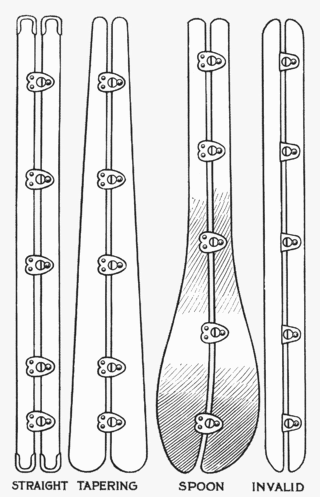
A busk is a rigid element of a corset at the centre front of the garment. Two types exist, one- and two-part busks.
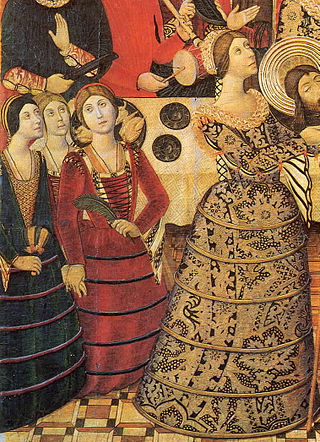
A farthingale is one of several structures used under Western European women's clothing in the 16th and 17th centuries to support the skirts in the desired shape and enlarge the lower half of the body. It originated in Spain in the fifteenth century. Farthingales served important social and cultural functions for women in Renaissance Europe as they were used, primarily by court women, to show their high social position and wealth.
A training corset is generally a corset used in body modification. A training corset may be used for orthopedic reasons or for cosmetic reasons
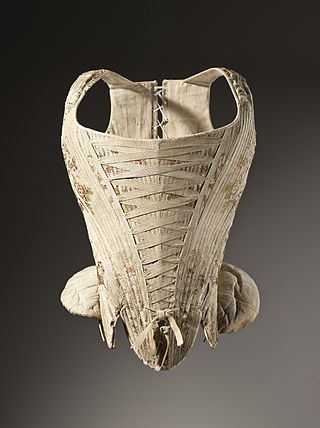
The corset has been an indispensable supportive undergarment for women, in Europe for several centuries, evolving as fashion trends have changed and being known, depending on era and geography, as a pair of bodies, stays and corsets. The appearance of the garment represented a change from people wearing clothes to fit their bodies to changing the shape of their bodies to support and fit their fashionable clothing.
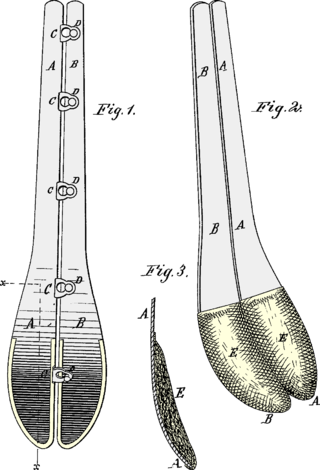
The spoon busk was a specialised kind of busk—the rigid element of a corset placed at the centre front. As its name implies, it was shaped like a spoon, with the bottom part of the busk widening and taking a dished form. It was invented in 1879 by Joseph Beckel of New York City.

In women's clothing, a corselet or corselette is a type of foundation garment, sharing elements of both bras and girdles. It extends from straps over the shoulders down the torso, and stops around the top of the legs. It may incorporate lace in front or in back. As an undergarment, a corselet can be open-style or panty-style.
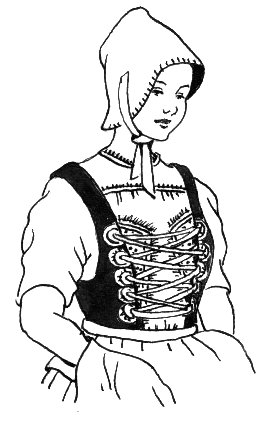
A bodice is an article of clothing traditionally for women and girls, covering the torso from the neck to the waist. The term typically refers to a specific type of upper garment common in Europe during the 16th to the 18th century, or to the upper portion of a modern dress to distinguish it from the skirt and sleeves. The name bodice is etymologically an odd plural spelling of "body" and comes from an older garment called a pair of bodies.

A hoop skirt or hoopskirt is a women's undergarment worn in various periods to hold the skirt extended into a fashionable shape.
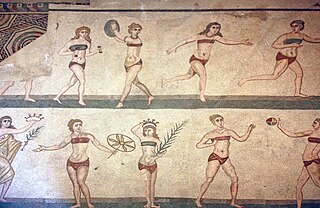
The history of bras is inextricably entwined with the social history of the status of women, including the evolution of fashion and changing views of the female body.

A collar stay, collar stick, collar bone, collar tab, collar stiffener, or collar stiff is a shirt accessory consisting of a smooth strip of rigid material, rounded at one end and pointed at the other, inserted into specially made pockets on the underside of a shirt collar to stabilize the collar's points. The stays ensure that the collar lies flat against the collarbone, looking crisp and remaining in the correct place.

Underwear, underclothing, or undergarments are items of clothing worn beneath outer clothes, usually in direct contact with the skin, although they may comprise more than a single layer. They serve to keep outer clothing from being soiled or damaged by bodily excretions, to lessen the friction of outerwear against the skin, to shape the body, and to provide concealment or support for parts of it. In cold weather, long underwear is sometimes worn to provide additional warmth. Special types of undergarments have religious significance. Some items of clothing are designed as undergarments, while others, such as T-shirts and certain types of shorts, are appropriate both as underwear and outerwear. If made of suitable material or textile, some underwear can serve as nightwear or swimwear, and some undergarments are intended for sexual attraction or visual appeal.

The corset controversy concerns supporters' and detractors' arguments for and against wearing a corset. The controversy was contemporary with the time that corsets were popular in society. Corsets, variously called a pair of bodys or stays, were worn by European women from the late 16th century onward, changing their form as fashions changed. In spite of radical change to fashion geographically and temporally, the corset or some derivative beneath an outer gown shaped the body or provided structure.

Variety Unit is an exhibit building at Shelburne Museum in Shelburne, Vermont.

A waist cincher is a belt worn around the waist to make the wearer's waist physically smaller, or to create the illusion of being smaller.
